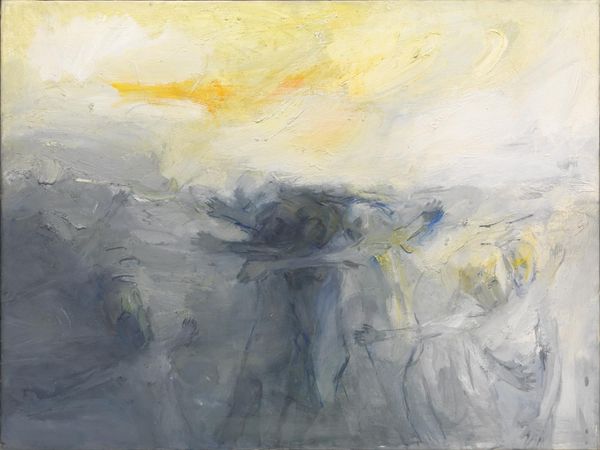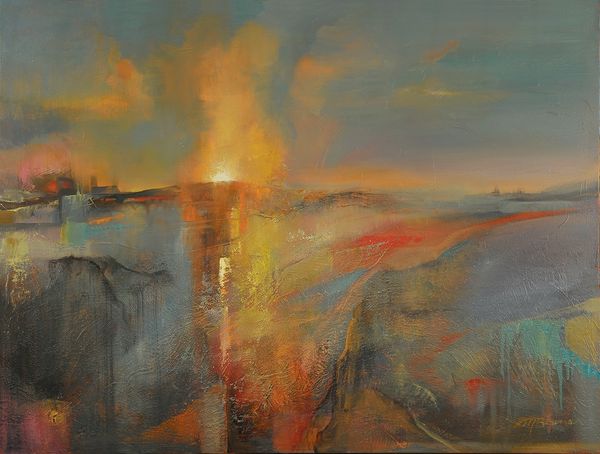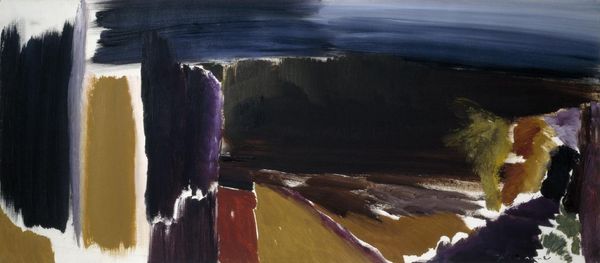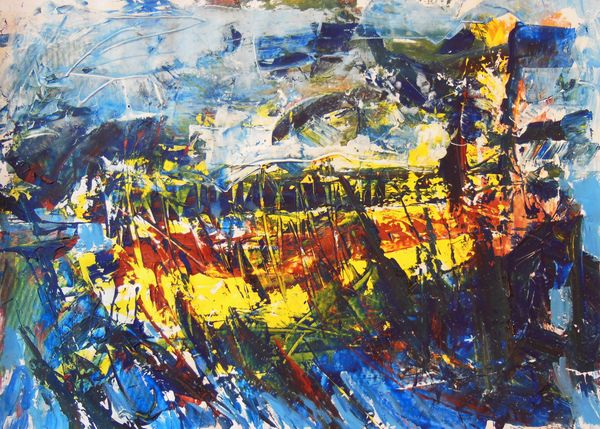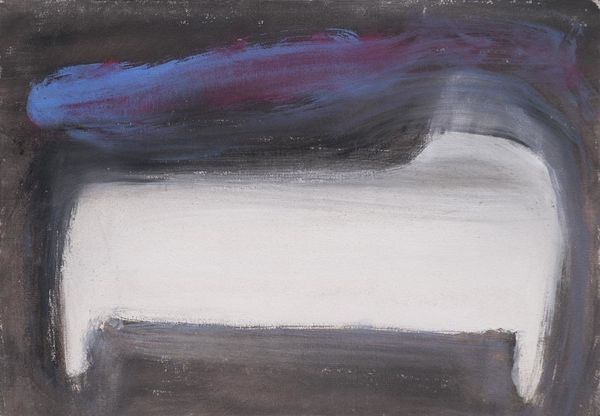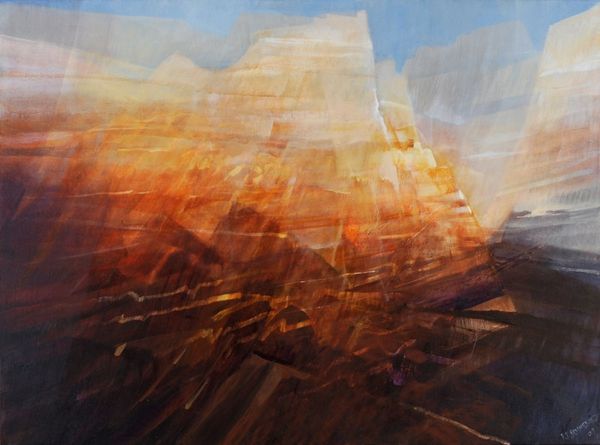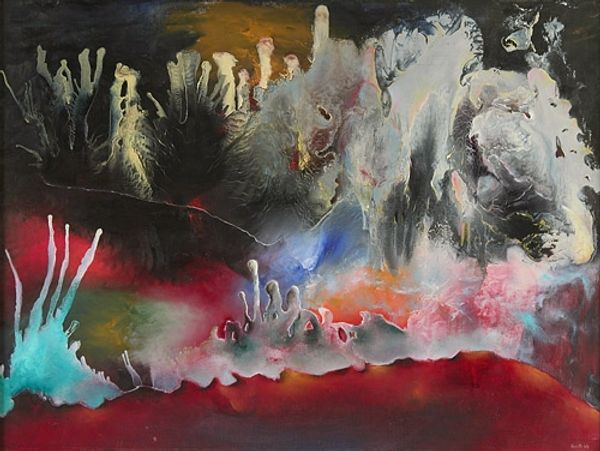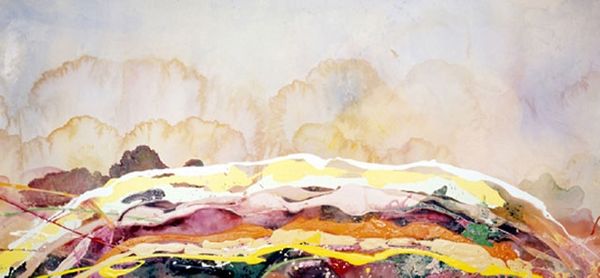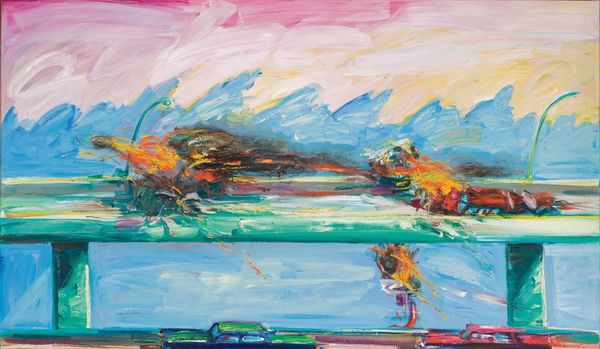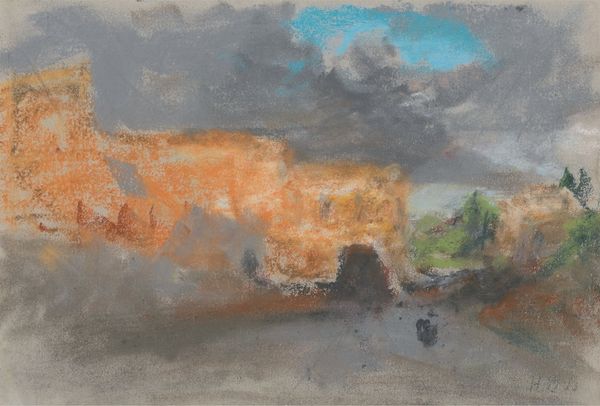
Copyright: Olivier Debre,Fair Use
Editor: We’re looking at Olivier Debré's "Composition Abstraite" from 1978, an acrylic painting. The sky dominates the canvas, overshadowing any discernible landscape elements. It's incredibly atmospheric, almost foreboding. What strikes you when you look at this piece? Curator: The overwhelming tension between chromatic values structures the viewer's perceptual experience. Note how Debré articulates a dichotomy between the upper registers – characterized by desaturated, cool tones – and the lower field, animated by warmer, more vibrant hues. This division establishes a fundamental spatial relationship within the work. How does this formal arrangement guide your eye across the canvas? Editor: It's like my eye is anchored to the bottom colors, but also pushed up to the gloom above, which makes the whole scene feel unstable, almost unbalanced. Is there any intention of that? Curator: Debré deliberately employs impasto techniques to disrupt any facile reading of depth, confounding perspectival logic. These raised surfaces draw attention to the painting's materiality, foregrounding the artwork as an object in itself, rather than a transparent window onto the world. What effect does this tangibility have on your interpretation? Editor: I see now. The thick paint reminds you that it’s a painting first and foremost. So even if there is an implied landscape, it’s the physical qualities of the paint that are most important. Curator: Precisely. The visible brushstrokes serve as indices of the artist's hand, transforming the canvas into a record of its own making. By eschewing illusionistic depth in favor of surface texture and tonal contrast, Debré compels the viewer to confront the intrinsic qualities of the medium itself. Editor: That's really insightful. I didn’t consider how the process was so closely linked to its impact. Curator: Indeed. Paying close attention to an artwork's intrinsic structure reveals a deeper engagement with its semiotic potential. We moved from merely 'seeing' a painting towards actively 'reading' its underlying logic and symbolic intent. Editor: Thanks, it's made me appreciate that even in abstraction, there's still so much to unpack when we analyze the forms and techniques used.
Comments
No comments
Be the first to comment and join the conversation on the ultimate creative platform.
